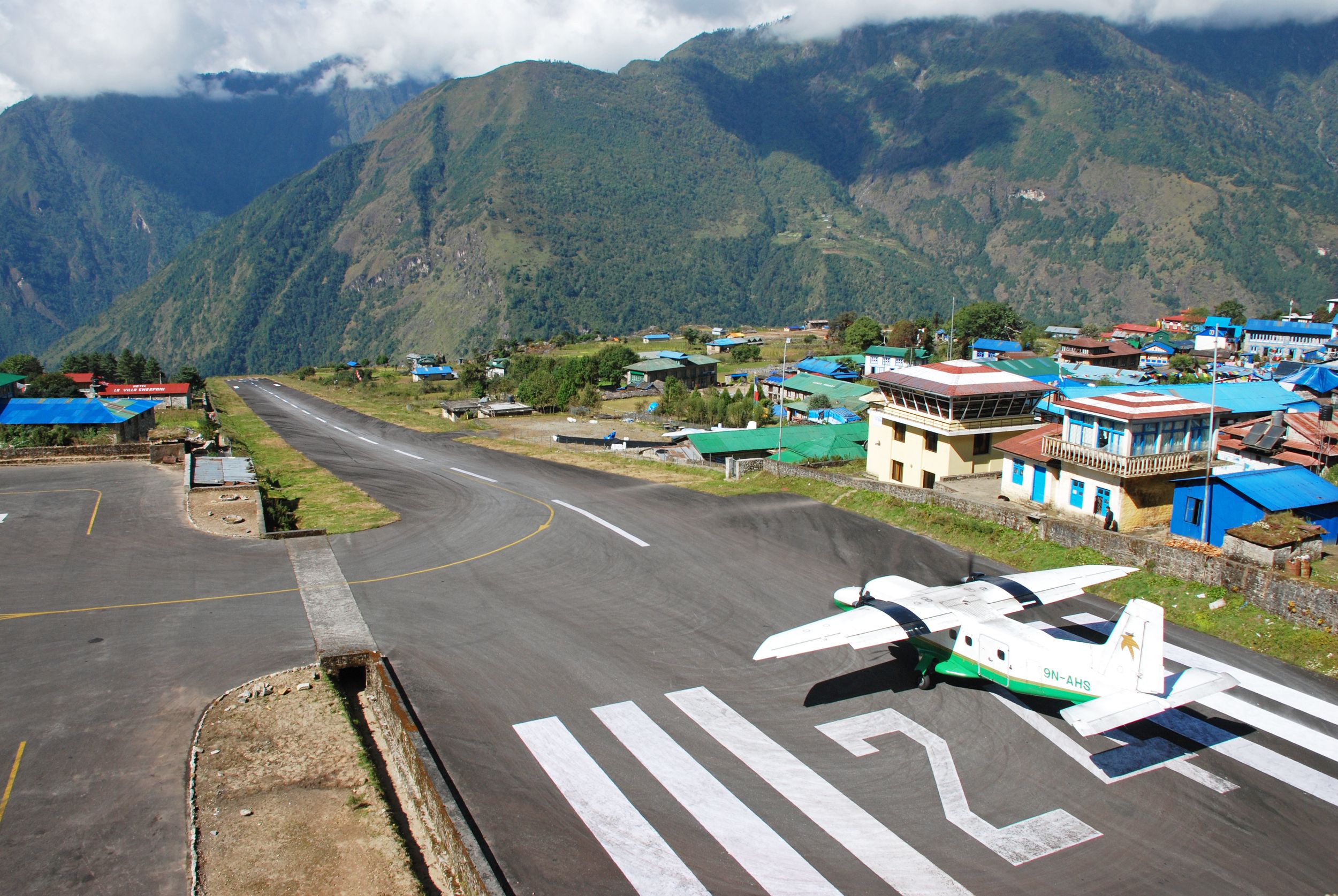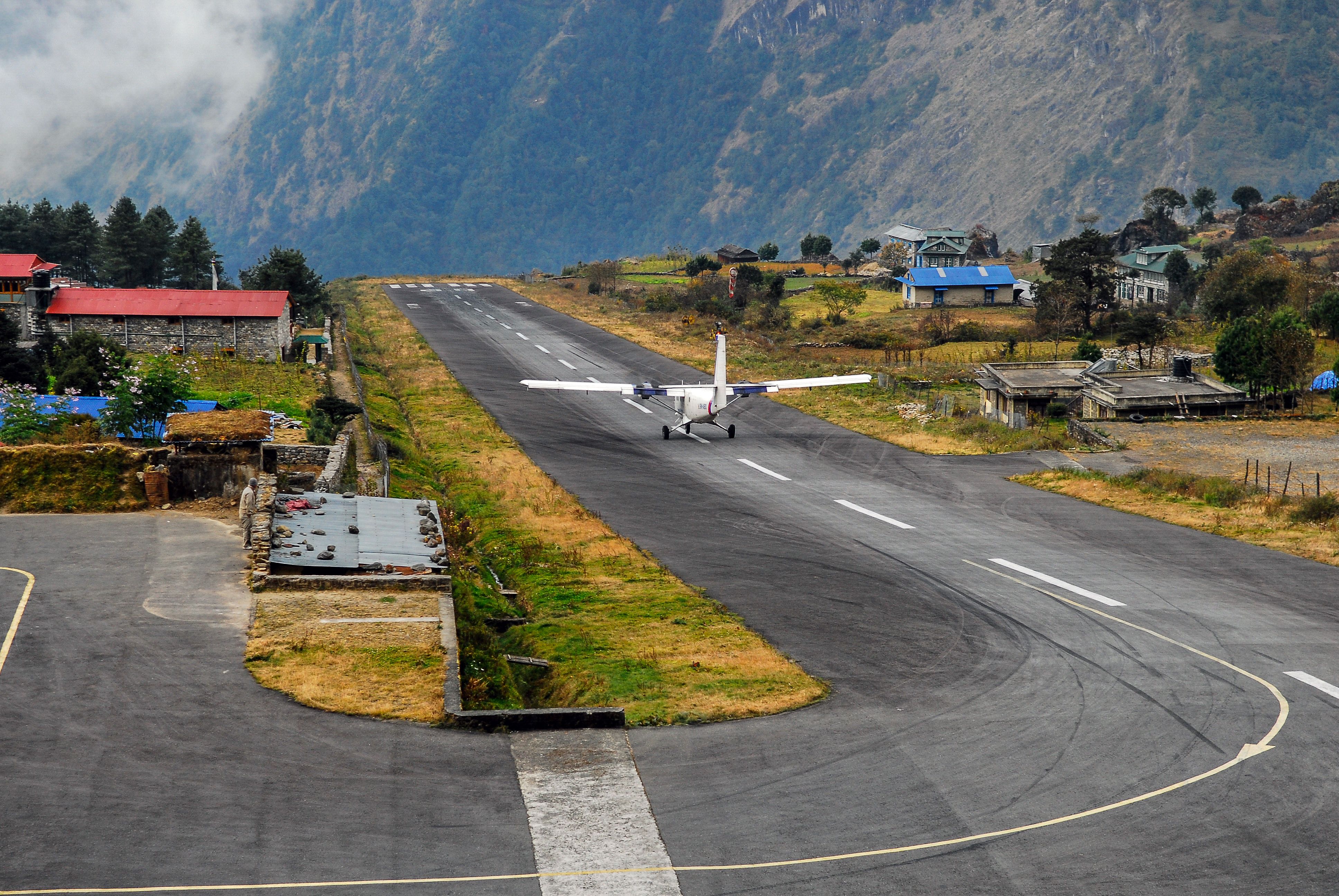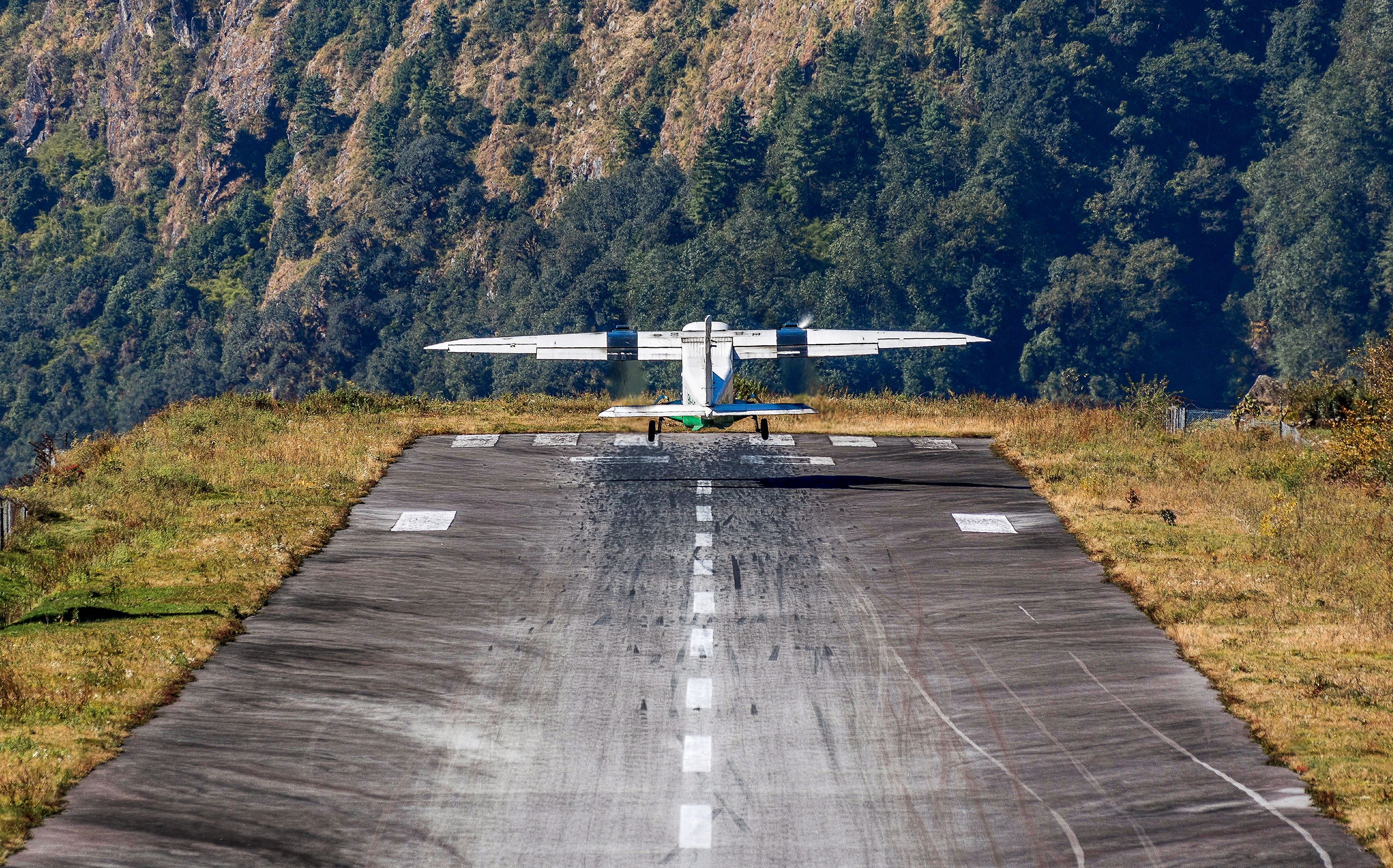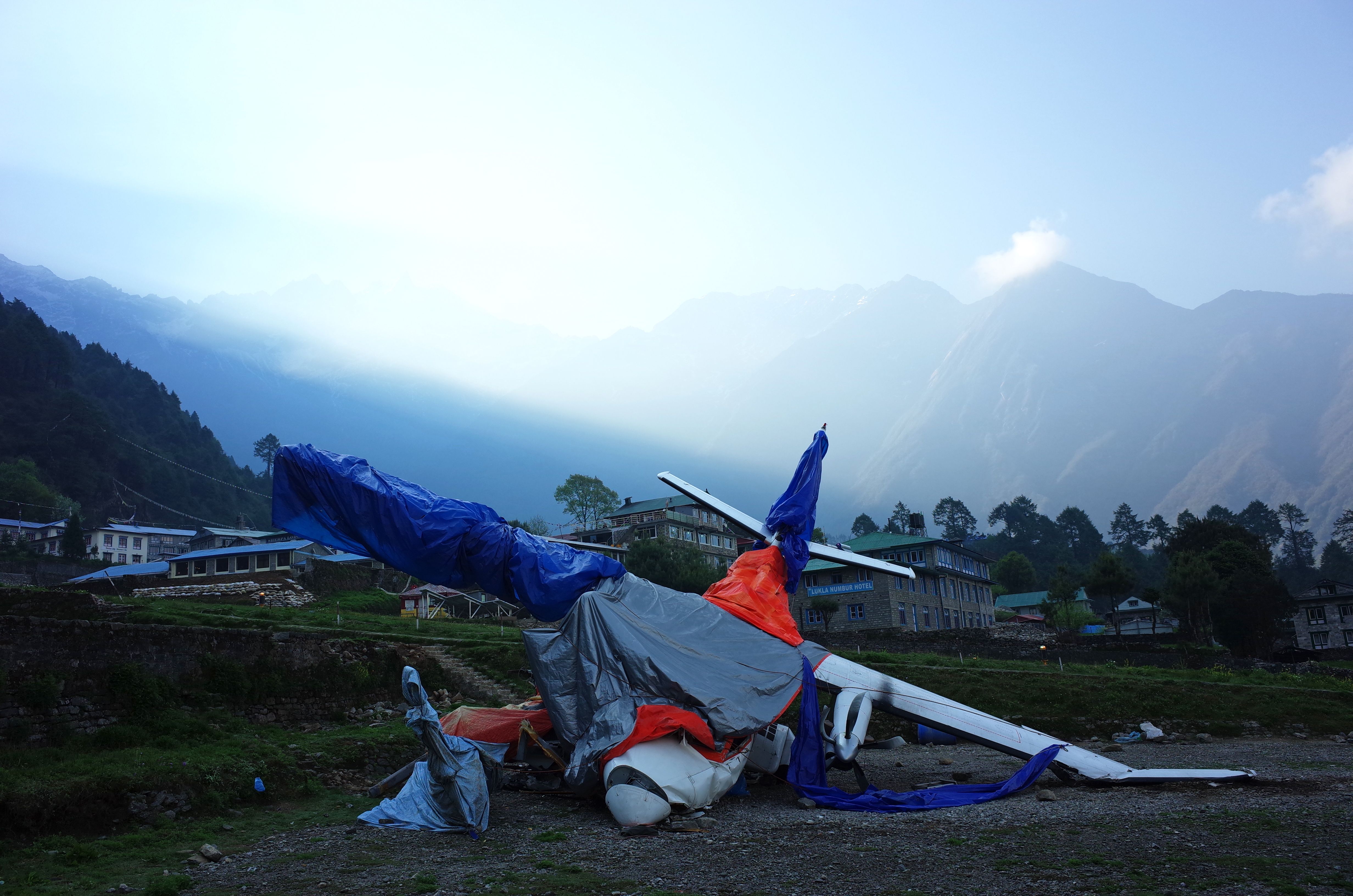Known as the gateway to Mount Everest, Lukla's Tenzing Hillary Airport (LUA) in Nepal has also been given the nickname "the world's most dangerous airport." As it happens, this is not without good reason, as the facility has been the site of multiple fatal accidents over the years, resulting in the death of over 50 passengers and crew. So what exactly is it that makes landing at Lukla Airport so perilous?
Landing vs mountaineering odds
Lukla is only a 30-minute flight from Tribhuvan International Airport (KTM), which serves the Nepalese capital city of Kathmandu. However, the latter sits at 4,390 feet (1,338 meters) above sea level, while the former has an altitude of 9,337 feet (2,846 meters). The small mountain village settlement runway saw close to 130,000 passengers in 2019, and its annual peak (2017) saw just under 147,000.
Most head for trekking expeditions in the Himalayas, with some on their way to attempt the more precarious climb of Everest. About 800 people now climb Everest every year, and, in the 2019 season, there were nine deaths on the mountain. All in all, over 300 people have perished on their way up or down from the summit, so, in comparison, the odds of making a safe landing at Lukla are not that offputting.
Want answers to more key questions in aviation? Check out the rest of our guides here!
Rather fittingly, the airport is, named after Sherpa Tenzing Norgay and Sir Edmund Hillary, the first two people to climb Mount Everest. It has a veritable concoction of all the things that present a challenge for planes and their pilots, which have helped cement its reputation as the world's most dangerous airport over the years.
Various challenges
Indeed, not only does Lukla Airport sit at a high altitude (although nowhere near as high as Daocheng Yading Airport in Tibet at 4,411 meters), but it is flanked by nearly 7,000-meter-high peaks. These include the likes of Kusum Kanguru at 6,367 meters, and Numbur at 6,959 meters. The conditions in the valley often generate strong wind shear, making it a difficult place to fly a commercial aircraft.
Additionally, the thinner air at found high altitudes makes it more difficult for engines to generate thrust. Meanwhile, the reduced resistance also makes it harder to slow the plane down, which means the longer the runway, the better.
Get all the latest aviation news right here on Simple Flying!
However, Lukla Airport's runway (with the headings 06/24) is not very accommodating in this regard. Made out of paved asphalt and sitting on a narrow mountain shelf, it measures no more than 527 meters (or 1,729 feet) in length.
A well-trained track-and-field athlete could run it in about 60 seconds, or maybe a bit longer when you factor in the location's high altitude. As the runway is so short, it has a 12% uphill incline to assist planes in slowing down as they land.
Its location on an incline boils down to the fact that, at the time of the airport's construction, local farmers did not want to give up the precious little flat land that was available in the area. As for the runway, it wasn't paved until 2001.
Due to the mountainous terrain, there are no go-around procedures at the airport. As such, this means that once a pilot has commenced an approach, they are committed to landing. Additionally, there are no radar or navigation systems at the airport, so pilots are fully dependent on what they can see from the cockpit.
A limited range of aircraft
Because of these conditions, only helicopters and small turboprops such as De Havilland DHC-6 Twin Otters, Pilatus PC-6 Porters, Dornier Do-228s, and L-410 Turbolets can use the airport. Despite these precautions, Lukla has still seen a considerable number of accidents, as we explored in greater detail in 2022.
Up to 50% of flights get canceled at certain times
Those familiar with the Himalayas know that the weather in this mountainous region is extremely unpredictable. As such, flights from Kathmandu often turn around if there is a sudden shift in the conditions at Lukla. During the monsoon season, about 50% of flights are canceled because of low visibility, and it is also common for the airport to close during mid to late mornings due to crosswinds.
Have you ever flown into Lukla Airport? What is the most interesting landing you have experienced? Let us know your thoughts and experiences in the comments!
Sources: CN Traveler, Kathmandu Post, Nepali Times




